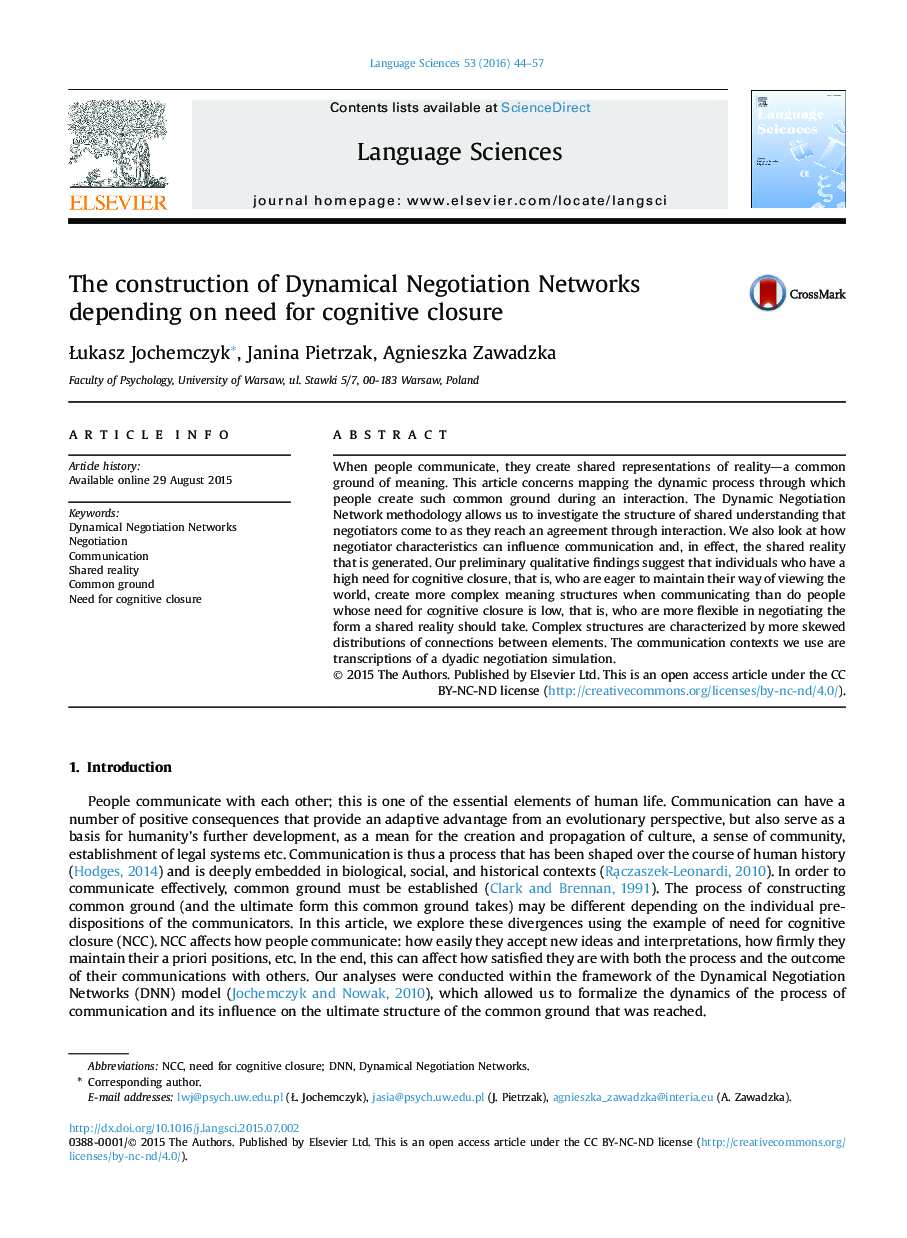| Article ID | Journal | Published Year | Pages | File Type |
|---|---|---|---|---|
| 10520100 | Language Sciences | 2016 | 14 Pages |
Abstract
When people communicate, they create shared representations of reality-a common ground of meaning. This article concerns mapping the dynamic process through which people create such common ground during an interaction. The Dynamic Negotiation Network methodology allows us to investigate the structure of shared understanding that negotiators come to as they reach an agreement through interaction. We also look at how negotiator characteristics can influence communication and, in effect, the shared reality that is generated. Our preliminary qualitative findings suggest that individuals who have a high need for cognitive closure, that is, who are eager to maintain their way of viewing the world, create more complex meaning structures when communicating than do people whose need for cognitive closure is low, that is, who are more flexible in negotiating the form a shared reality should take. Complex structures are characterized by more skewed distributions of connections between elements. The communication contexts we use are transcriptions of a dyadic negotiation simulation.
Related Topics
Social Sciences and Humanities
Arts and Humanities
Language and Linguistics
Authors
Åukasz Jochemczyk, Janina Pietrzak, Agnieszka Zawadzka,
